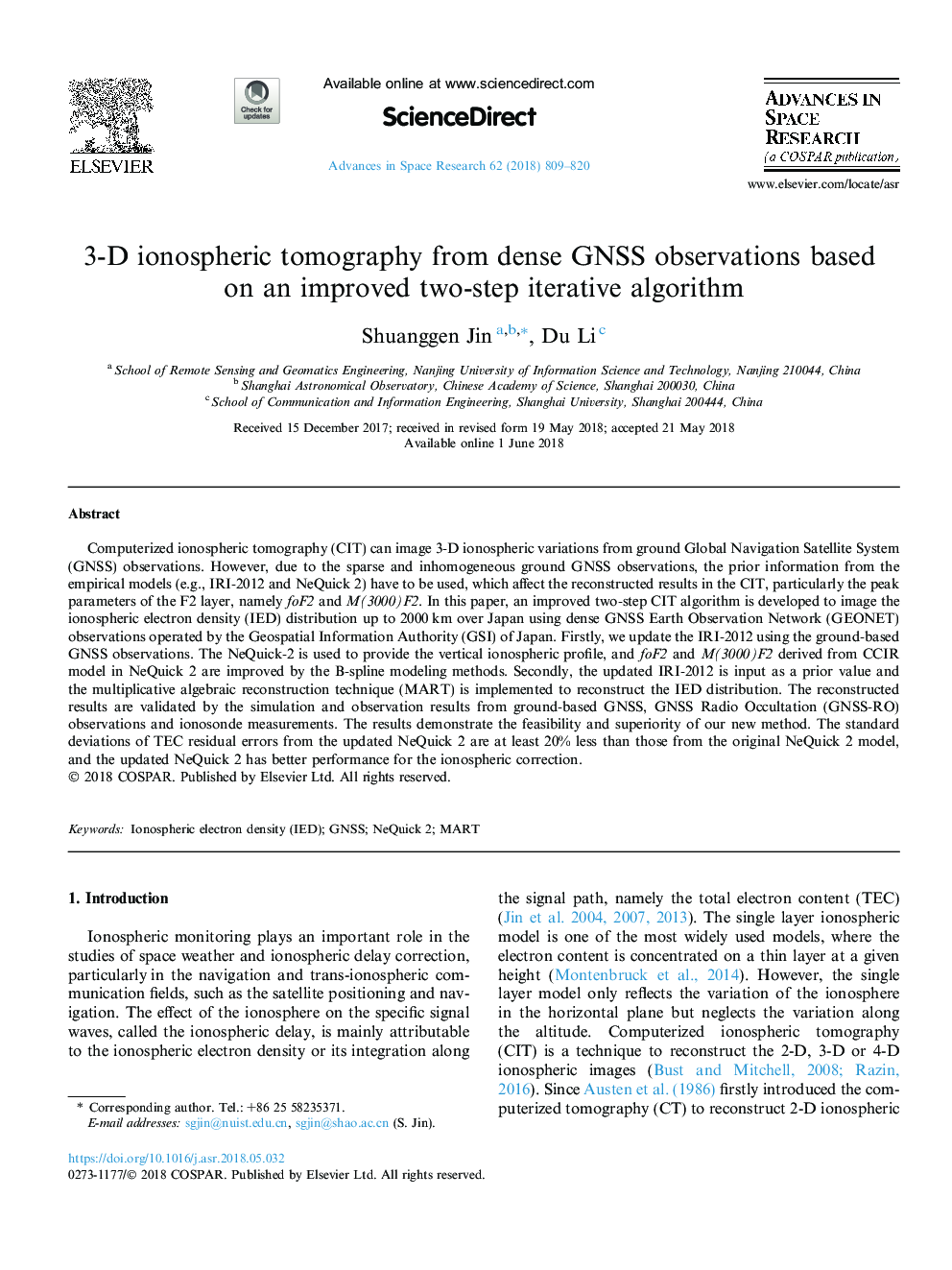| Article ID | Journal | Published Year | Pages | File Type |
|---|---|---|---|---|
| 8131682 | Advances in Space Research | 2018 | 12 Pages |
Abstract
Computerized ionospheric tomography (CIT) can image 3-D ionospheric variations from ground Global Navigation Satellite System (GNSS) observations. However, due to the sparse and inhomogeneous ground GNSS observations, the prior information from the empirical models (e.g., IRI-2012 and NeQuick 2) have to be used, which affect the reconstructed results in the CIT, particularly the peak parameters of the F2 layer, namely foF2 and M(3000)F2. In this paper, an improved two-step CIT algorithm is developed to image the ionospheric electron density (IED) distribution up to 2000â¯km over Japan using dense GNSS Earth Observation Network (GEONET) observations operated by the Geospatial Information Authority (GSI) of Japan. Firstly, we update the IRI-2012 using the ground-based GNSS observations. The NeQuick-2 is used to provide the vertical ionospheric profile, and foF2 and M(3000)F2 derived from CCIR model in NeQuick 2 are improved by the B-spline modeling methods. Secondly, the updated IRI-2012 is input as a prior value and the multiplicative algebraic reconstruction technique (MART) is implemented to reconstruct the IED distribution. The reconstructed results are validated by the simulation and observation results from ground-based GNSS, GNSS Radio Occultation (GNSS-RO) observations and ionosonde measurements. The results demonstrate the feasibility and superiority of our new method. The standard deviations of TEC residual errors from the updated NeQuick 2 are at least 20% less than those from the original NeQuick 2 model, and the updated NeQuick 2 has better performance for the ionospheric correction.
Related Topics
Physical Sciences and Engineering
Earth and Planetary Sciences
Space and Planetary Science
Authors
Shuanggen Jin, Du Li,
